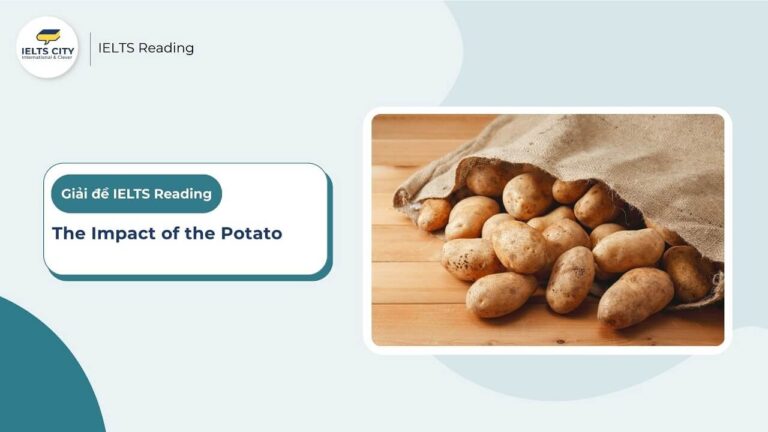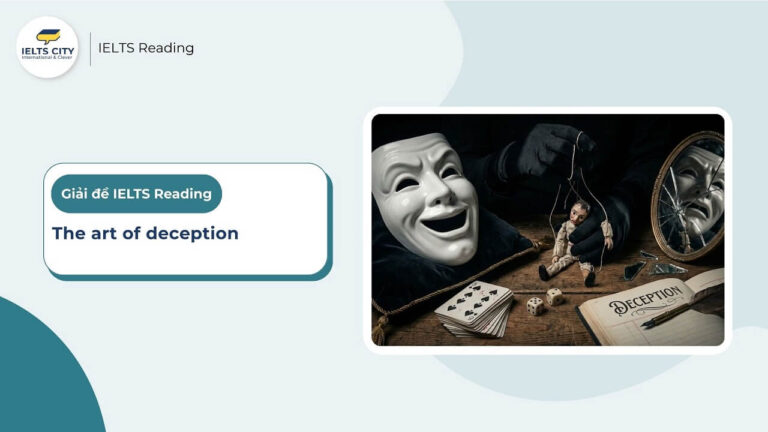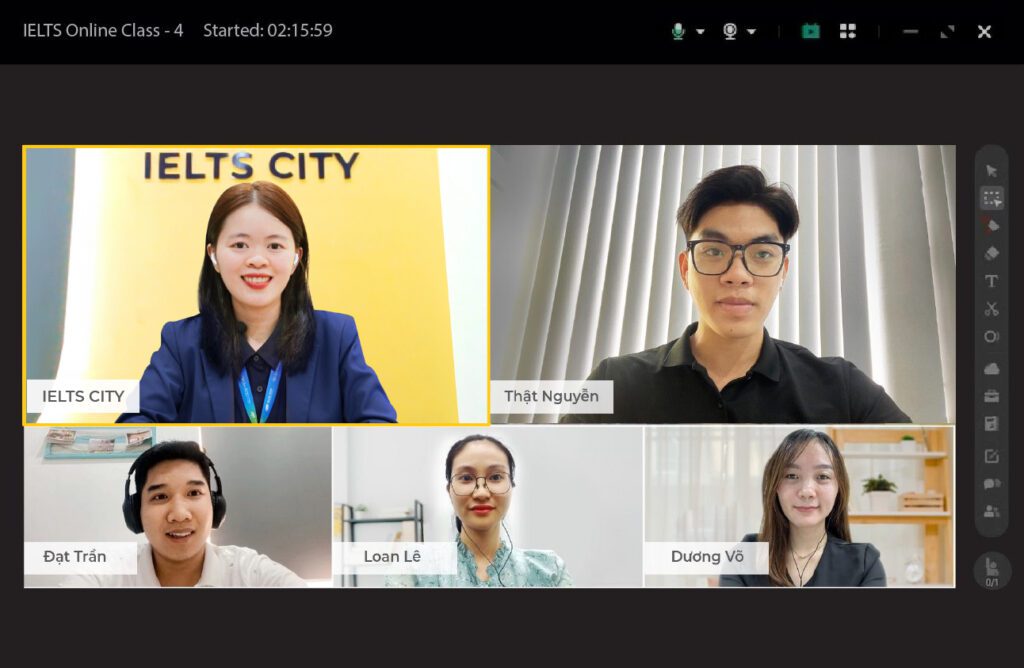
Nội dung chính
ToggleBài đọc
Marketing And Mind Control
How marketing and advertising appeal to the associative nature of the brain
While there had been a long tradition of giving rings as a commitment to marry, the custom of giving diamond engagement rings was in large part manufactured by one of the most effective marketing campaigns in history . In the early 1900s, diamond sales were declining, posing a serious problem for the company that essentially had control over the diamond market. In 1938, this company hired an advertising agency. Which proposed reshaping social attitudes toward diamonds? As well as magazines showing film stars draped in diamonds, the agency arranged for movies to incorporate diamond engagement rings into their plots. The campaign culminated with the slogan:’ A diamond is forever. At the time, the approach was unique. Rather than pushing a brand, the objective was to promote diamonds as the symbol of everlasting love. This was achieved by exploiting the associative nature of the brain: associating neurons! Activated by the concept of’ love ‘ with neurons that encoded the concept of “diamonds. By 1941, diamond sales had increased by 55 %.
Advertising comes in many forms, from blatant neon signs to subtly embedded products in movies. In each case, the goal is to mold our habits, desires and opinions. Our visual system is targeted by an avalanche of information on the internet, street posters, and billboards and in movie theatres. Our auditory system submits to catchy radio jingles and telemarketers. More surreptitiously, our olfactory system is targeted by variations of vanilla and citrus perfumes aimed at enticing the US to linger in a retail outlet. It is difficult to measure how effective these campaigns are, but as in the ‘ A diamond is forever ’ campaign, they can be so successful that they change the fabric of our culture. In the case of bottled water, we are swayed by advertising into paying for something that we can obtain for free. Most people cannot distinguish bottled from tap water, much less between brands of bottled water, which is why you rarely hear of a bottled water company proposing a blind taste test.
So why is marketing such an effective mind – control technique? It is interesting to consider whether other animals exhibit anything analogous to humans ‘ susceptibility to advertising. If we provide a lab rat with two types of cereal, it will consume approximately the same amount of each. However, if we put that rat with another rat that spent its day eating just one type, when faced with a choice, our rat will now show a preference for the same type as the other rat was eating. Psychologists call this ‘ socially transmitted food preference ‘.
What many regard as the first documented examples of cultural learning in primates started with a clever monkey that lived in a colony of Japanese monkeys on the island of Koshima. She began taking her dirt – covered sweet potatoes to the river to wash them before eating them. Upon seeing this, a few 11 other open – minded monkeys picked up on the idea. Potato washing then spread from monkey to monkey and, over the course of a few years, most monkeys were eating clean potatoes. Humans are clearly not the only animals to engage in imitation and social learning.
Learning by observation can be an extraordinarily valuable brain feature, this is how we learn to communicate and perform motor skills as well as deal with many everyday problems. For example, a newcomer struggling to purchase tickets and navigate the subway system in a foreign city may step back to learn from the people nearby. Humans and other primates exhibit multiple forms of imitative learning and this is called cultural transmission.
A component of advertising relies on the marketer’s ability to tap into the brain’s propensity for imitation. Anybody who has watched TV knows advertisements are disproportionately populated with attractive, successful looking individuals. If we are going to imitate someone, we are more inclined to imitate those who appear to be popular and appealing.
Although not all researchers are convinced by the findings, a number of studies indicate that some animals also imitate dominant members of their group. Primatologist Frans de Waal provides anecdotal evidence of preferential imitation among chimpanzees. He noted that in one particular group the dominant male was hurt and was limping as a result. Soon unlikely if a non-dominant male had been injured.
Imitation is undoubtedly an invaluable ability, but often our propensity to imitate generalises indiscriminately, leading to poor decisions. When athlete Dick Fosbury revolutionised the high jump by jumping over the bar backward in 1968, imitators obviously copied his jumping style, not his brand of sports shoes. However, today, sports people appear in advertisements asking the US to buy the laptops or sports drinks that they promote. Rationally, we know these people’s success did not depend on these products, so it seems our propensity to purchase products relates more to neural programs that evolved to encourage imitation of those further up the social ladder. Today , companies engage in stealth marketing campaigns in which people are paid to frequent bars or websites to covertly promote certain products. Companies also perform studies in which they track the eye movements of people viewing displays , and carefully craft names , packages and jingles associated with their products. While we may like to believe that manipulation on a grand scale would not be possible, that’s not to say that advertising is innately harmful. To the contrary, the marketing of products or ideas is essential to human culture. The point is that we should ensure our choices reflect our actual goals and desires, and we must distinguish between the dissemination of information which is for our own good, and our manipulation for the benefit of companies
Kiến thức cần nắm
Câu hỏi
Questions 1-5
Choose the correct letter, A, B, c or D.
Write the correct letter in boxes 1-5 on your answer sheet.
1. According to the writer, which marketing technique attempts to make consumers stay in a shop for longer?Check answers
- A playing appealing music
- B emitting pleasant scents
- C displaying attractive posters
- D making in – store announcements
2. The writer mentions bottled water in order to show thatCheck answers
- A consumers buy it because of the fact that it is marketed.
- B people purchase it despite the fact that it has no taste.
- C marketers need not do taste tests when a campaign is effective.
- D tests prove that people cannot differentiate it from tap water.
3. According to the writer, socially transmitted food preference occurs whenCheck answers
- A only dominant members of an animal group influence what others eat.
- B the same types of animals naturally prefer the same types of food.
- C animals are influenced by what any other animals of the same species eat.
- D a food type is more desirable because an animal views that food as scarce.
4. According to the writer, how is learning by observation and imitation a useful feature of the brain?Check answers
- A it helps people overcome challenges.
- B positive models can influence social behaviour.
- C it can give an advantage when communicating with others.
- D cultural norms and relationships can be understood more easily
5. According to the writer, how does television advertising exploit the human tendency to imitate others ?Check answers
- A It shows buying behaviour that marketers want to encourage in viewers.
- B It features people who have a desirable image.
- C It shows older people whom teenagers admire.
- D It features successful people endorsing products responsible for their success.
Questions 6-10
Do the following statements agree with the claims of the writer in Reading Passage ?
In boxes 6-10 on your answer sheet, write
YES if the statement agrees with the claims of the writer
NO if the statement contradicts the claims of the writer
NOT GIVEN if it is impossible to say what the writer thinks about this
6 The diamond campaign worked by making a connection in people’s minds between diamonds and luxury
7 People are more aware of visual marketing than auditory marketing.
8 The campaign advertising diamonds had a positive influence on society.
9 There is still some uncertainty about whether animals copy the behaviour of the most powerful animals among them.
10 Consumers make a logical connection between celebrities ‘ achievements and the products they promote.
Questions 11-14
Complete each sentence with the correct ending , A – G , below.
Write the correct letter, A – G , in boxes 37-40 on your answer sheet.
- A people imitated behaviour that was linked with success .
- B younger animals of a certain species are more likely to imitate each other.
- C an animal would imitate another that had higher status .
- D imitation of popular sportspeople has occurred for many decades .
- E products are marketed to potential consumers who are unaware that marketing is occurring .
- F Animals can develop new habits by observation.
- G incentives are provided for consumers who behave in a certain way.
11 The behaviour of the monkeys on the island of Koshima showed that
12 Primatologist Frans de Waal found that
13 Dick Fosbury is mentioned in order to show that
14 A feature of some modern marketing campaigns is that
Đáp án
Questions 1-5: Multiple Choice
1. According to the writer, which marketing technique attempts to make consumers stay in a shop for longer?
- Đáp án: B (emitting pleasant scents)
- Giải thích: Tác giả đề cập rằng hệ thống khứu giác của chúng ta bị nhắm mục tiêu bởi các mùi hương như vani và cam quýt nhằm dụ dỗ chúng ta nán lại cửa hàng lâu hơn.
- Vị trí và trích dẫn: Đoạn 2, câu 4.”More surreptitiously, our olfactory system is targeted by variations of vanilla and citrus perfumes aimed at enticing the US to linger in a retail outlet.” (Lén lút hơn, hệ thống khứu giác của chúng ta bị nhắm mục tiêu bởi các biến thể của nước hoa vani và cam quýt nhằm dụ dỗ chúng ta nán lại cửa hàng bán lẻ.)
2. The writer mentions bottled water in order to show that
- Đáp án: A (consumers buy it because of the fact that it is marketed.)
- Giải thích: Tác giả dùng ví dụ nước đóng chai để minh họa sức mạnh của quảng cáo: nó khiến chúng ta trả tiền cho thứ mà ta có thể lấy miễn phí (nước máy) và thường không phân biệt được sự khác nhau. Điều này cho thấy người tiêu dùng mua chủ yếu do tác động của tiếp thị.
- Vị trí và trích dẫn: Đoạn 2, câu 6.”In the case of bottled water, we are swayed by advertising into paying for something that we can obtain for free.” (Trong trường hợp nước đóng chai, chúng ta bị quảng cáo làm lung lay để trả tiền cho thứ mà chúng ta có thể có miễn phí.)
3. According to the writer, socially transmitted food preference occurs when
- Đáp án: C (animals are influenced by what any other animals of the same species eat.)
- Giải thích: Bài đọc đưa ra ví dụ về chuột thí nghiệm. Khi một con chuột thấy con chuột khác (bất kỳ, không nhất thiết là con đầu đàn) ăn một loại ngũ cốc, nó sẽ có xu hướng thích loại đó hơn.
- Vị trí và trích dẫn: Đoạn 3, câu 4.”However, if we put that rat with another rat… our rat will now show a preference for the same type as the other rat was eating.” (Tuy nhiên, nếu ta đặt con chuột đó với một con chuột khác… con chuột của ta sẽ tỏ ra thích loại thức ăn mà con chuột kia đang ăn.)
4. According to the writer, how is learning by observation and imitation a useful feature of the brain?
- Đáp án: A (it helps people overcome challenges.)
- Giải thích: Tác giả ví dụ về một người mới đến gặp khó khăn khi mua vé tàu điện ngầm (thách thức), họ sẽ quan sát người khác để học cách làm. Điều này giúp giải quyết vấn đề/thách thức hàng ngày.
- Vị trí và trích dẫn: Đoạn 5, câu 1-2.”…deal with many everyday problems. For example, a newcomer struggling to purchase tickets… may step back to learn from the people nearby.” (…đối phó với nhiều vấn đề hàng ngày. Ví dụ, một người mới đến đang chật vật mua vé… có thể lùi lại để học hỏi từ những người gần đó.)
5. According to the writer, how does television advertising exploit the human tendency to imitate others?
- Đáp án: B (It features people who have a desirable image.)
- Giải thích: Quảng cáo truyền hình thường sử dụng những cá nhân trông hấp dẫn và thành công (hình ảnh đáng mơ ước) vì con người có xu hướng bắt chước những người nổi tiếng và lôi cuốn.
- Vị trí và trích dẫn: Đoạn 6, câu 2-3.”…advertisements are disproportionately populated with attractive, successful looking individuals. … we are more inclined to imitate those who appear to be popular and appealing.” (…quảng cáo xuất hiện dày đặc những cá nhân trông hấp dẫn, thành công… chúng ta có xu hướng bắt chước những người có vẻ nổi tiếng và lôi cuốn.)
Đăng ký nhận tư vấn miễn phí
Ưu đãi học phí lên đến 40%
& Cơ hội nhận học bổng trị giá 2.000.000 VNĐ
Đăng ký nhận tư vấn miễn phí
Ưu đãi học phí lên đến 40%
________
Questions 6-10: YES / NO / NOT GIVEN
6. The diamond campaign worked by making a connection in people’s minds between diamonds and luxury.
- Đáp án: NO
- Giải thích: Bài đọc nói rằng chiến dịch đã kết nối kim cương với “tình yêu vĩnh cửu” (everlasting love), không phải sự sang trọng (luxury).
- Vị trí và trích dẫn: Đoạn 1, câu 6.”…the objective was to promote diamonds as the symbol of everlasting love.” (…mục tiêu là quảng bá kim cương như biểu tượng của tình yêu vĩnh cửu.)
7. People are more aware of visual marketing than auditory marketing.
- Đáp án: NOT GIVEN
- Giải thích: Đoạn 2 có liệt kê các hình thức tiếp thị thị giác (visual) và thính giác (auditory), nhưng không hề so sánh mức độ nhận thức (aware) của con người đối với hai loại này xem cái nào hơn cái nào.
8. The campaign advertising diamonds had a positive influence on society.
- Đáp án: NOT GIVEN
- Giải thích: Bài đọc nói chiến dịch này thành công rực rỡ về mặt doanh số và thay đổi văn hóa (“change the fabric of our culture”), nhưng không đánh giá liệu ảnh hưởng đó là tích cực (positive) hay tiêu cực cho xã hội.
9. There is still some uncertainty about whether animals copy the behaviour of the most powerful animals among them.
- Đáp án: YES
- Giải thích: Tác giả nói rằng “không phải tất cả các nhà nghiên cứu đều bị thuyết phục” bởi các phát hiện này, nghĩa là vẫn còn sự không chắc chắn/tranh luận.
- Vị trí và trích dẫn: Đoạn 7, câu 1.”Although not all researchers are convinced by the findings, a number of studies indicate that some animals also imitate dominant members…” (Mặc dù không phải tất cả các nhà nghiên cứu đều bị thuyết phục bởi các phát hiện này, một số nghiên cứu chỉ ra rằng…)
10. Consumers make a logical connection between celebrities ‘ achievements and the products they promote.
- Đáp án: NO
- Giải thích: Bài đọc nói rằng về mặt lý trí (rationally), chúng ta biết thành công của họ không phụ thuộc vào sản phẩm. Việc mua hàng dựa trên “chương trình thần kinh” khuyến khích bắt chước chứ không phải dựa trên kết nối logic.
- Vị trí và trích dẫn: Đoạn 8, câu 4.”Rationally, we know these people’s success did not depend on these products, so it seems our propensity to purchase products relates more to neural programs…” (Về mặt lý trí, chúng ta biết thành công của những người này không phụ thuộc vào các sản phẩm đó…)
Questions 11-14: Sentence completion
11. The behaviour of the monkeys on the island of Koshima showed that
- Đáp án: F (Animals can develop new habits by observation.)
- Giải thích: Những con khỉ ở đảo Koshima đã học cách rửa khoai lang bằng cách quan sát con khỉ cái thông minh đầu tiên làm điều đó.
- Vị trí và trích dẫn: Đoạn 4.”…potato washing then spread from monkey to monkey… Humans are clearly not the only animals to engage in imitation and social learning.”
12. Primatologist Frans de Waal found that
- Đáp án: C (an animal would imitate another that had higher status.)
- Giải thích: Frans de Waal quan sát thấy các con tinh tinh bắt chước dáng đi khập khiễng của con đực đầu đàn (con có địa vị cao nhất).
- Vị trí và trích dẫn: Đoạn 7.”…some animals also imitate dominant members… preferential imitation among chimpanzees.”
13. Dick Fosbury is mentioned in order to show that
- Đáp án: A (people imitated behaviour that was linked with success.)
- Giải thích: Những người bắt chước Dick Fosbury đã sao chép “kiểu nhảy” của ông (hành vi dẫn đến thành công/huy chương), chứ không phải sao chép “giày thể thao” của ông (sản phẩm không liên quan). Tác giả dùng ví dụ này để đối lập với việc bắt chước mù quáng thời nay.
- Vị trí và trích dẫn: Đoạn 8, câu 2.”…imitators obviously copied his jumping style, not his brand of sports shoes.”
14. A feature of some modern marketing campaigns is that
- Đáp án: E (products are marketed to potential consumers who are unaware that marketing is occurring.)
- Giải thích: Tiếp thị lén lút (stealth marketing) thuê người đến quán bar hoặc lên mạng để quảng bá sản phẩm một cách bí mật (“covertly”), khiến người tiêu dùng không biết mình đang bị tiếp thị.
- Vị trí và trích dẫn: Đoạn 8, câu 5.”…stealth marketing campaigns in which people are paid to frequent bars or websites to covertly promote certain products.”
Cập nhật đề thi thật sớm nhất tại:





















